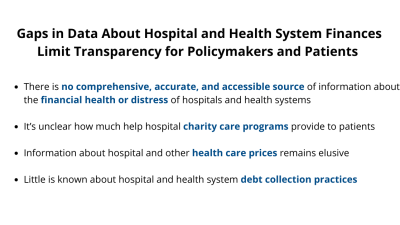 Gaps in Data About Hospital and Health System Finances Limit Transparency for Policymakers and Patients
Issue Brief
Gaps in Data About Hospital and Health System Finances Limit Transparency for Policymakers and Patients
Issue Brief
This brief describes gaps in data about hospital and health system finances and business practices that limit transparency for policymakers, researchers, and consumers. It examines data issues involving finances, debt collection practices, charity care, prices, ownership, and the 340B Drug Pricing Program.